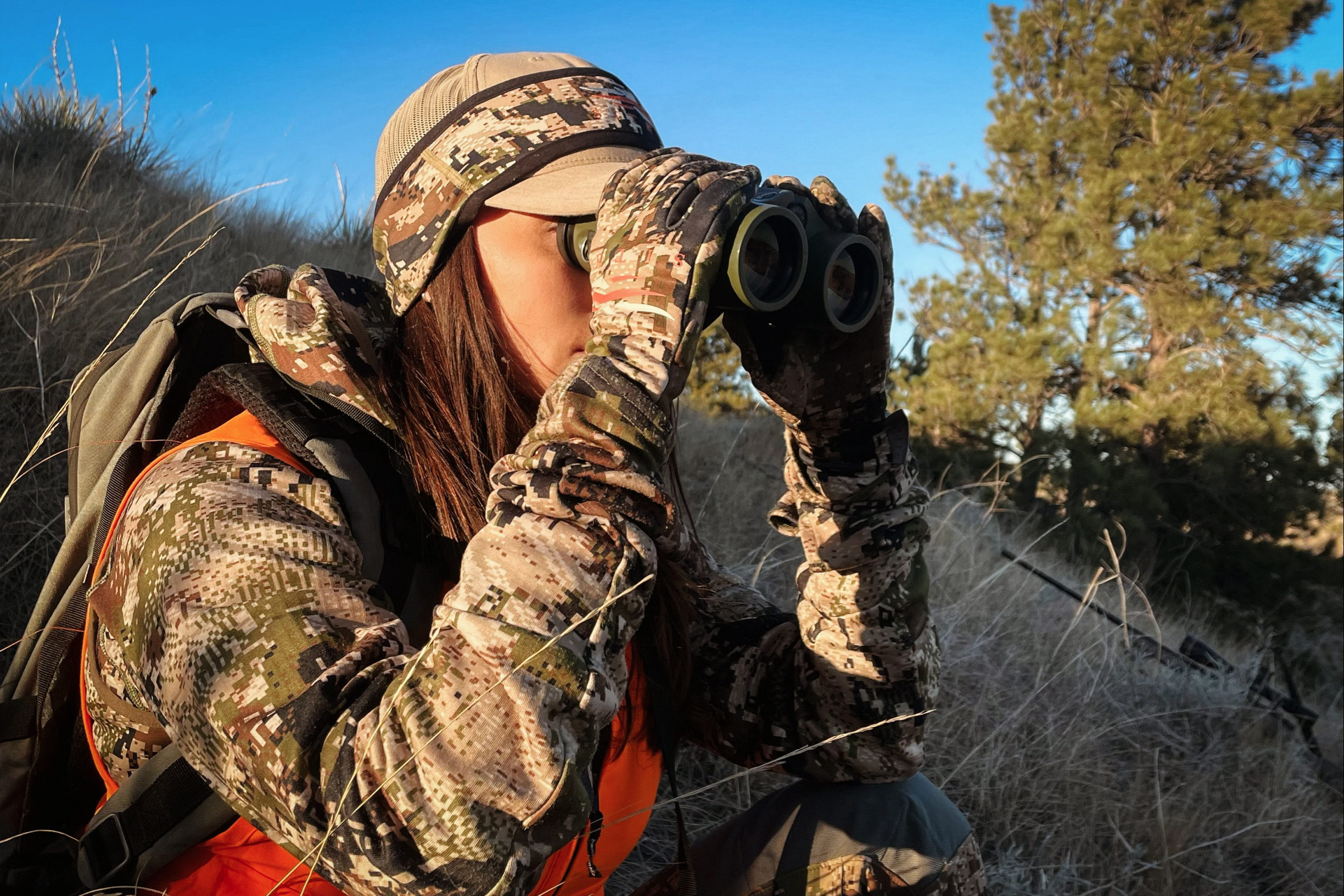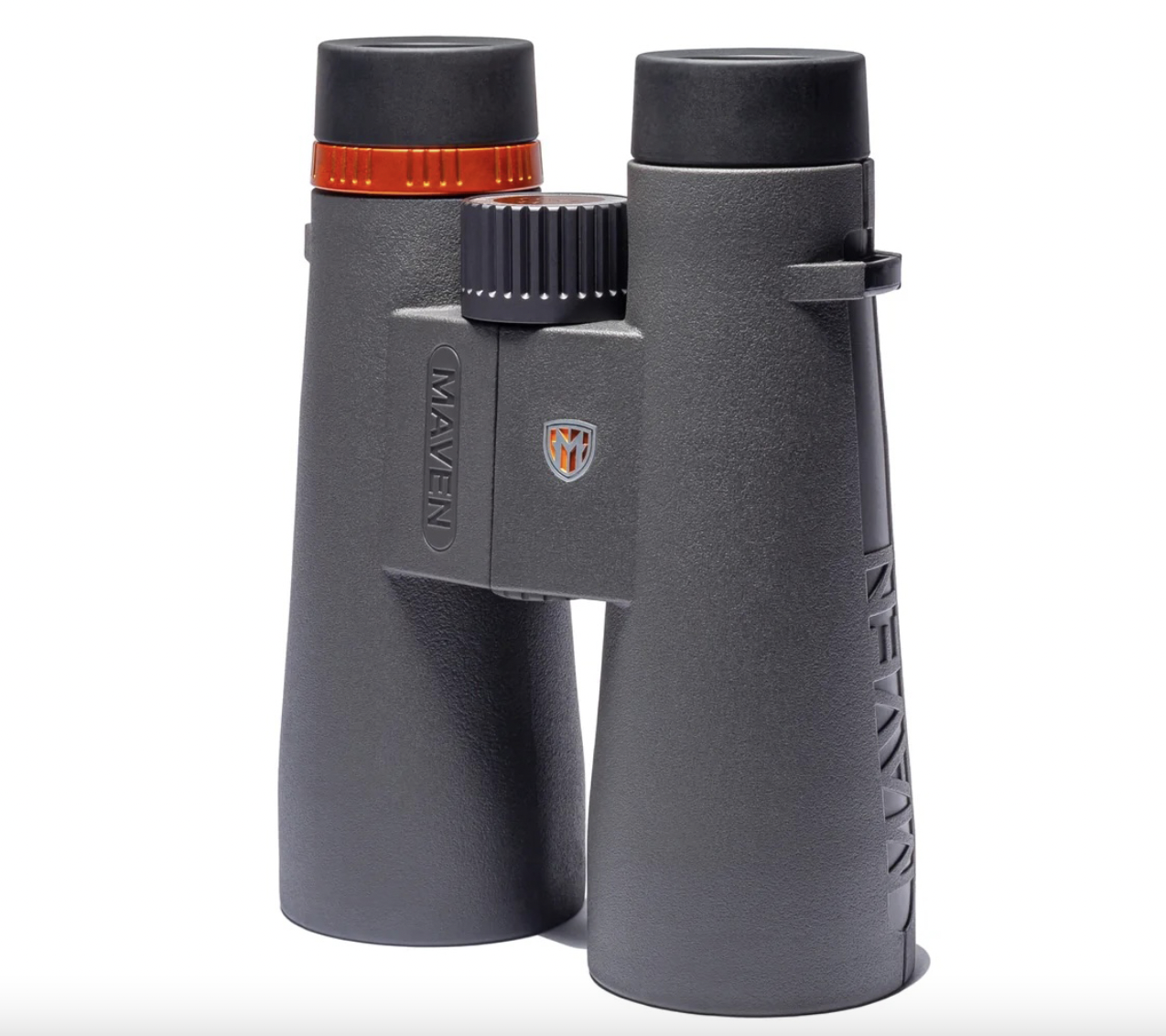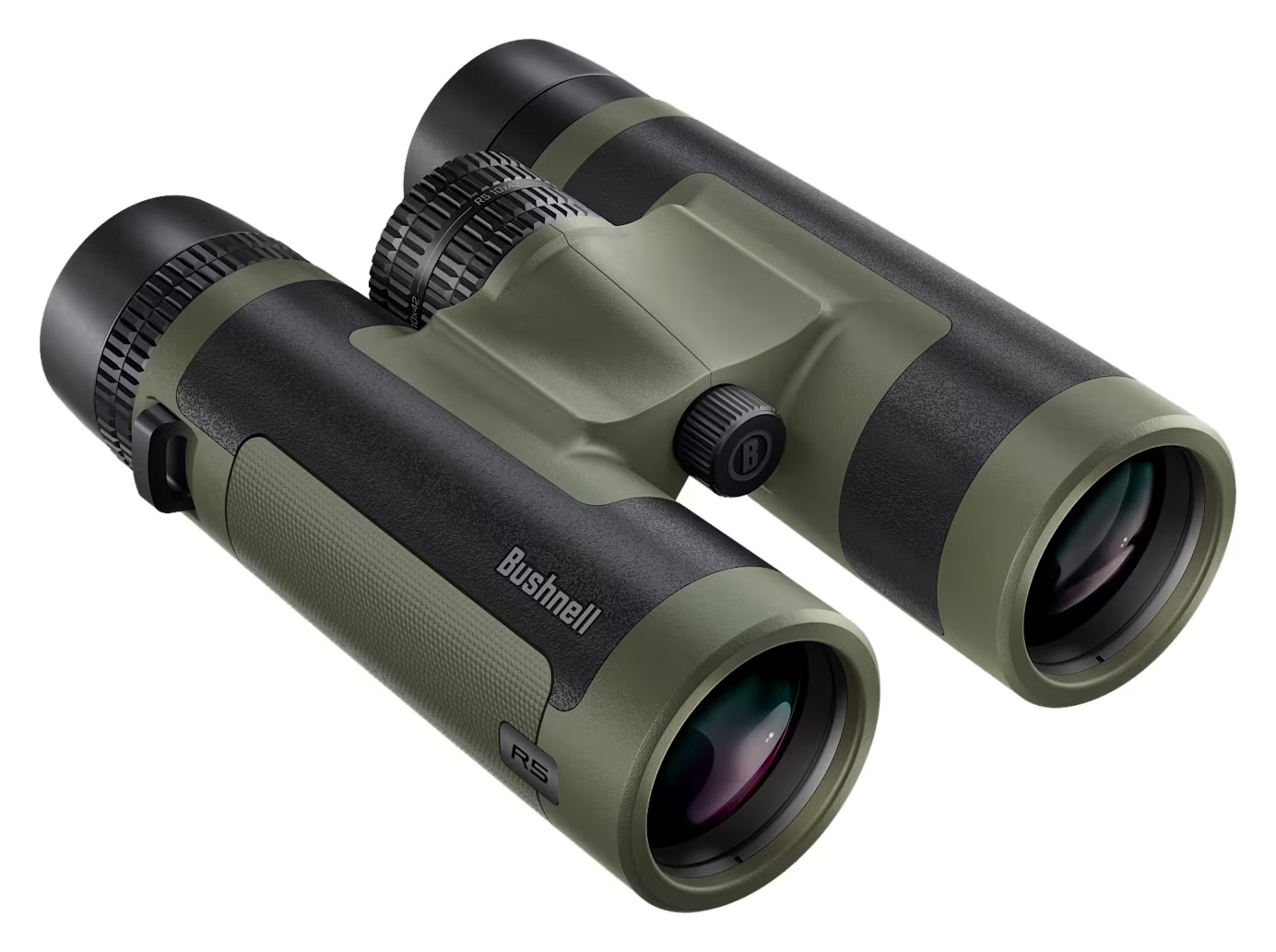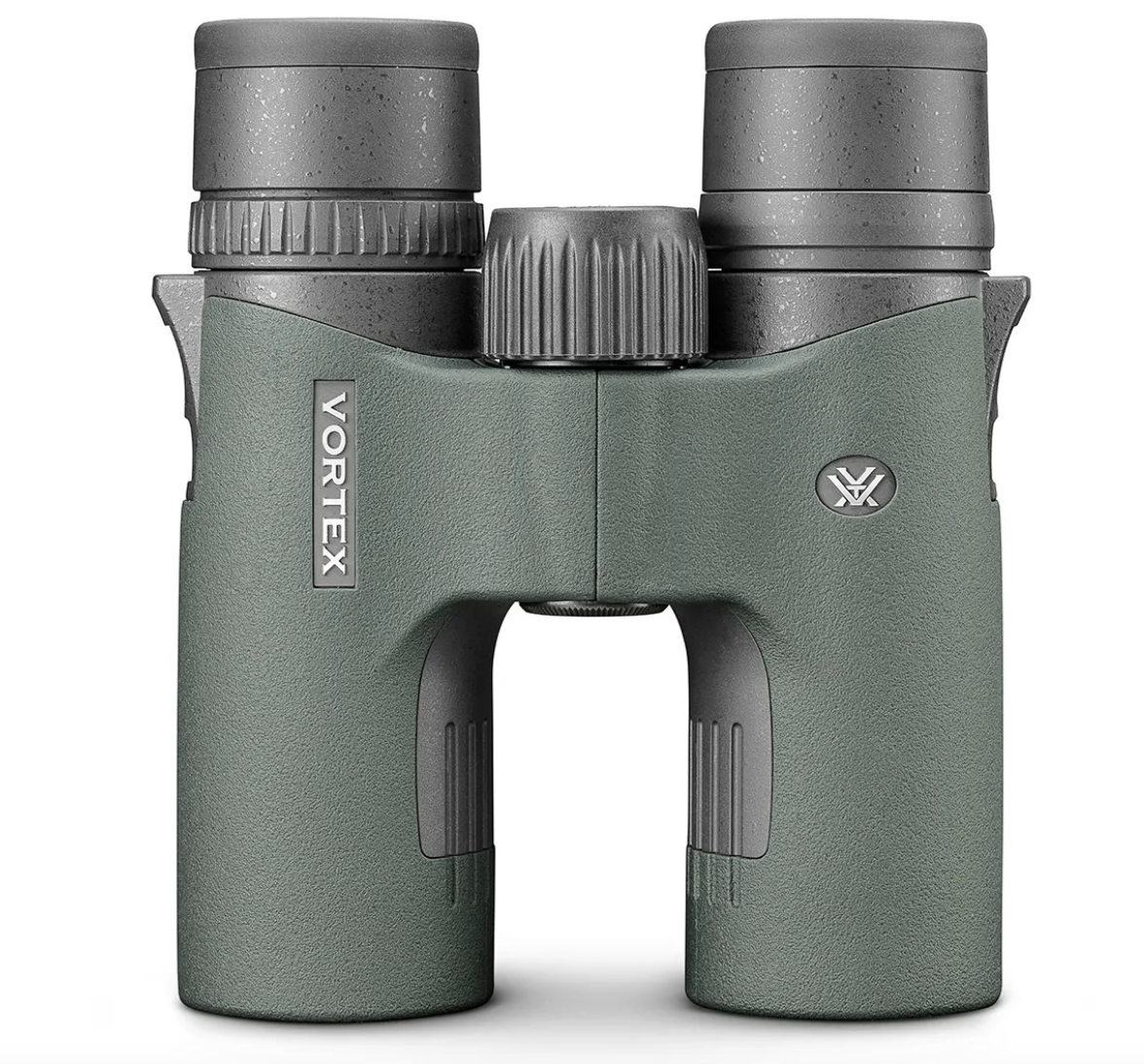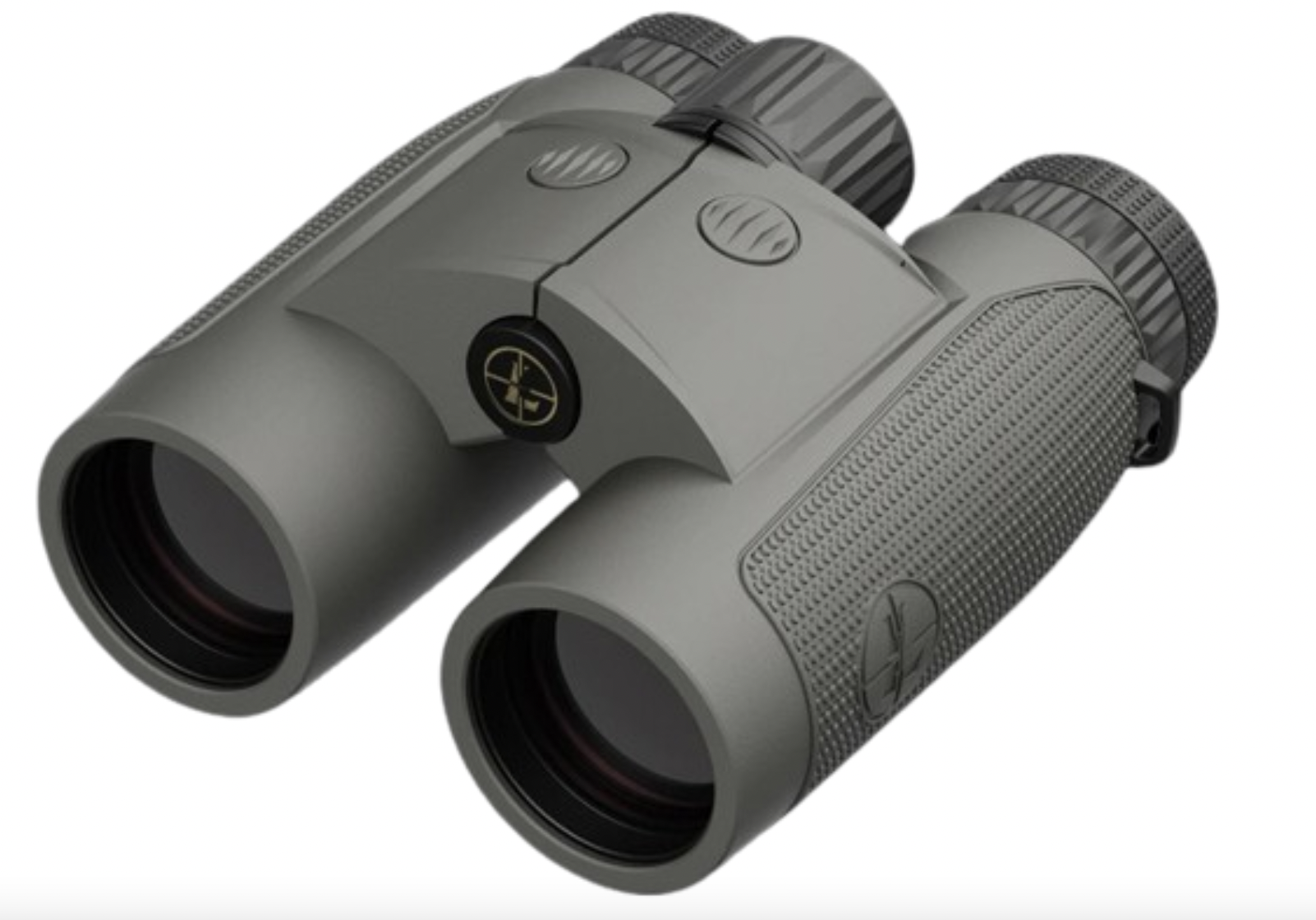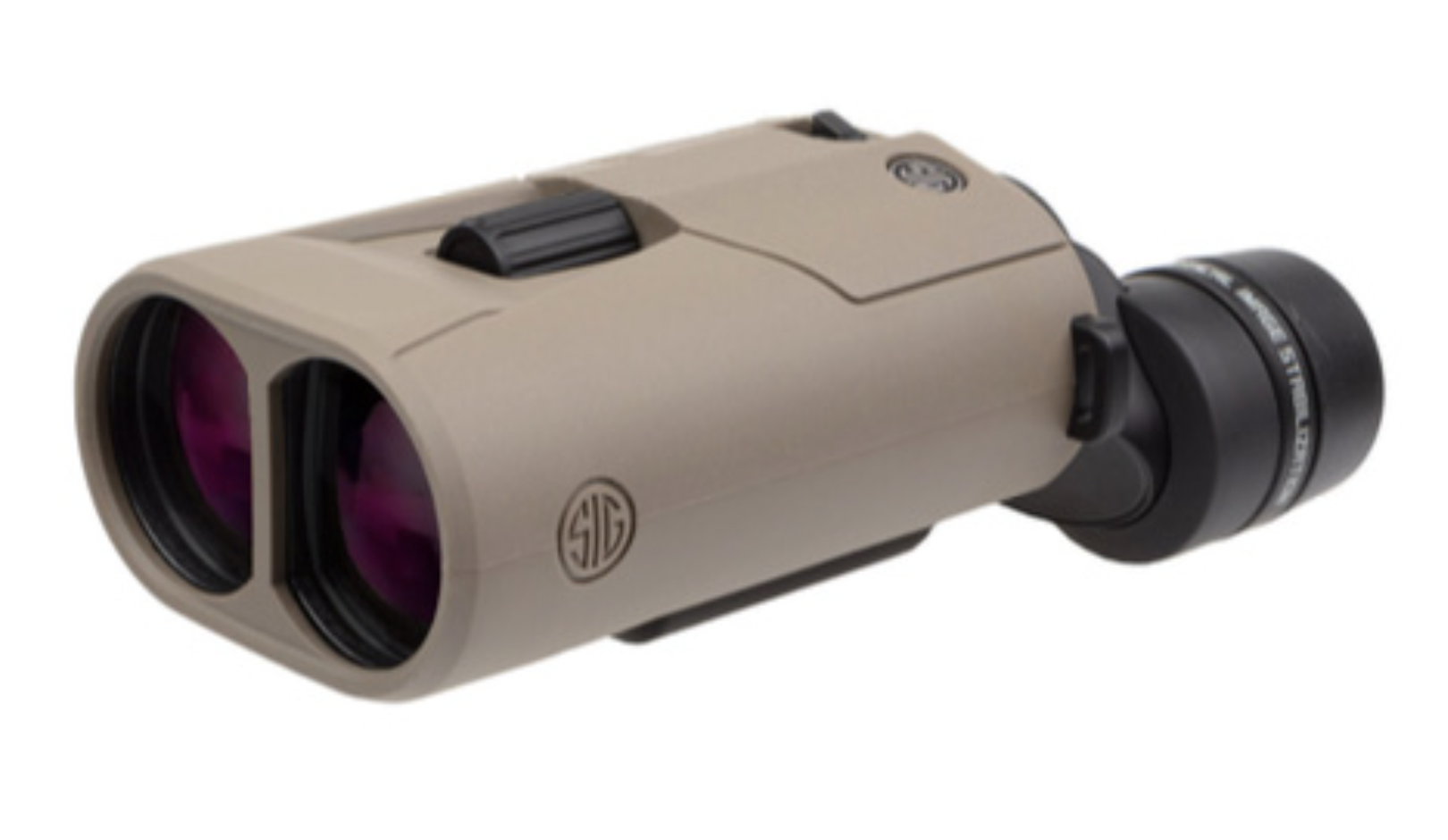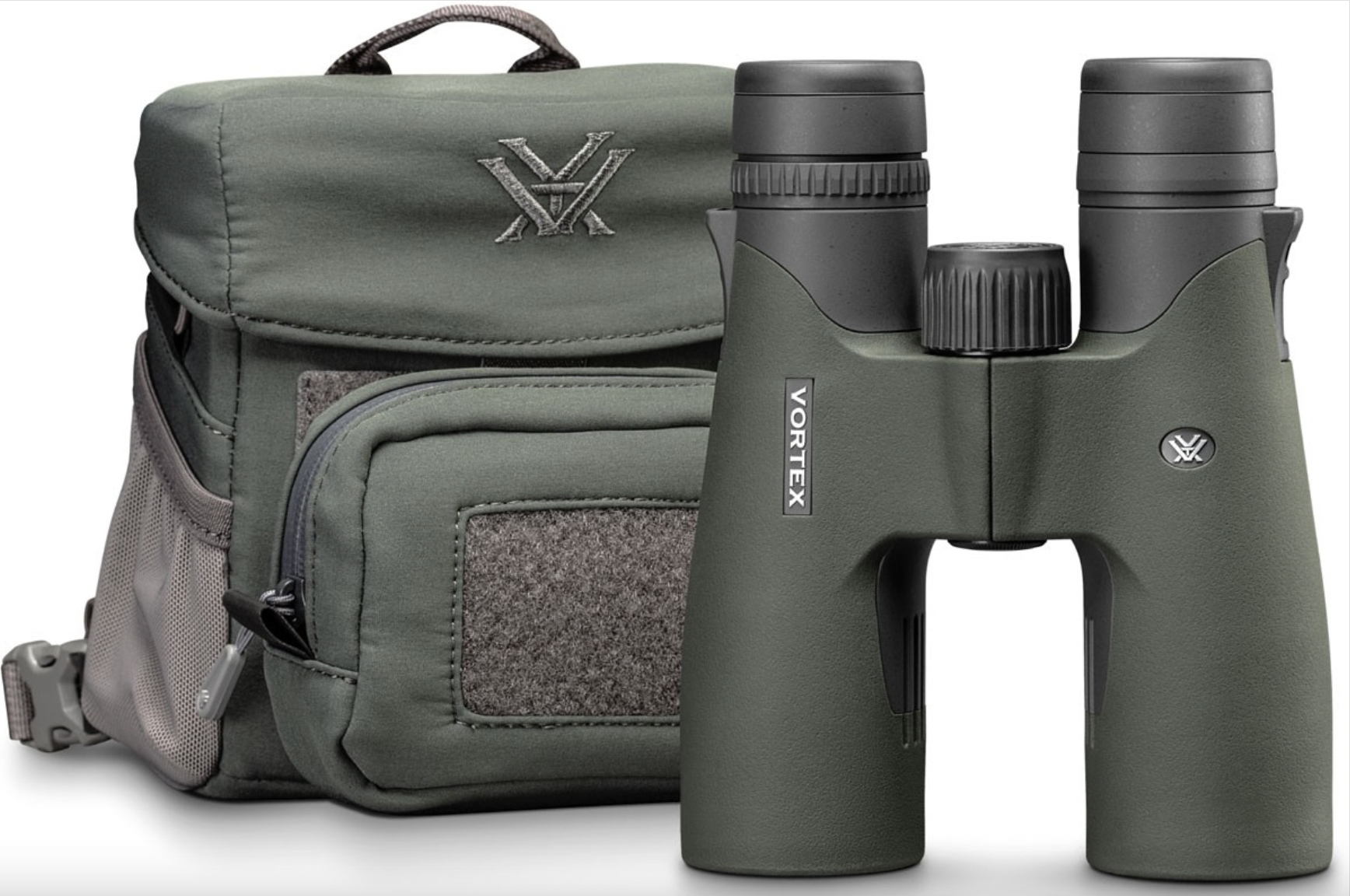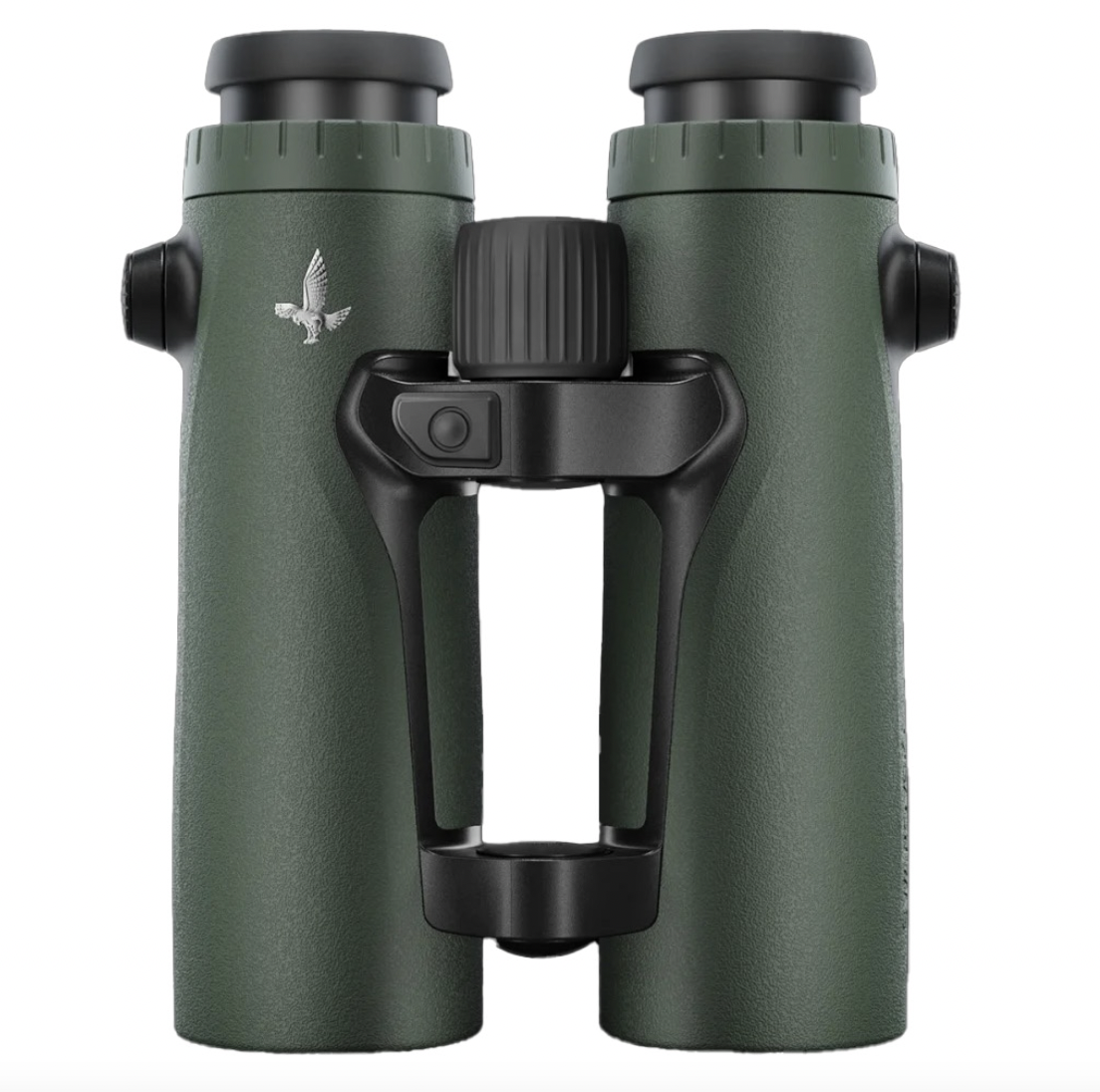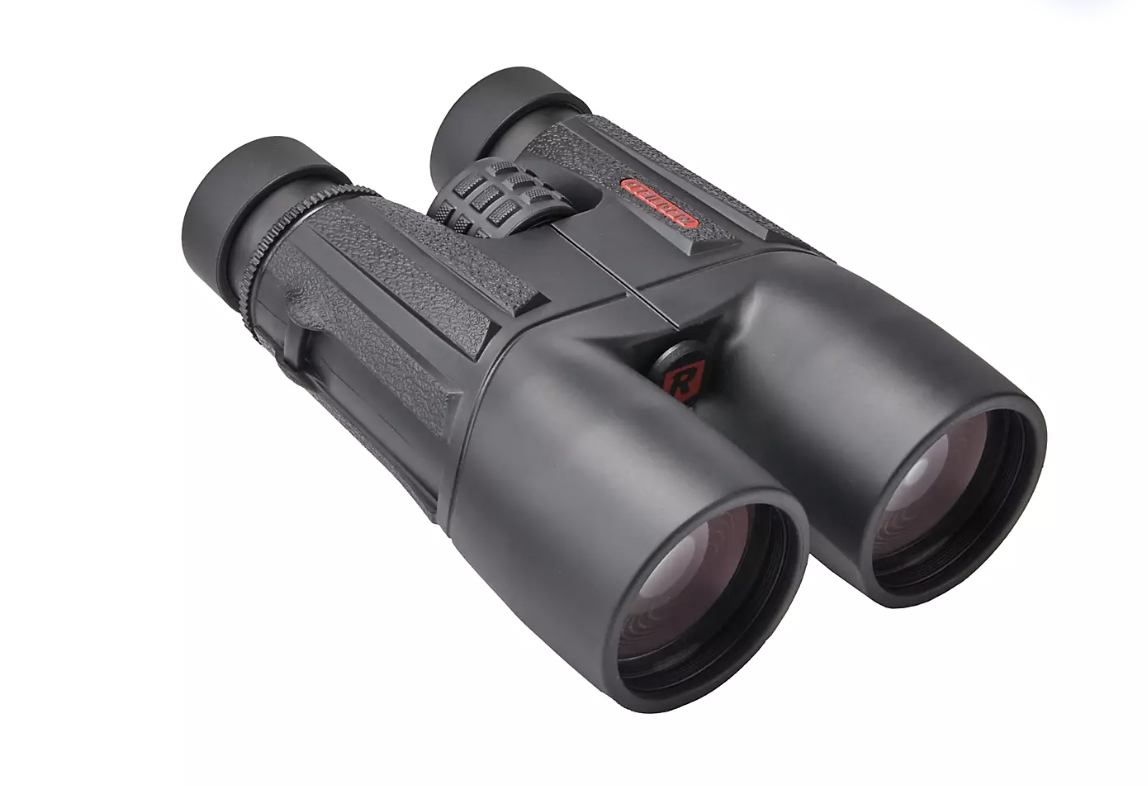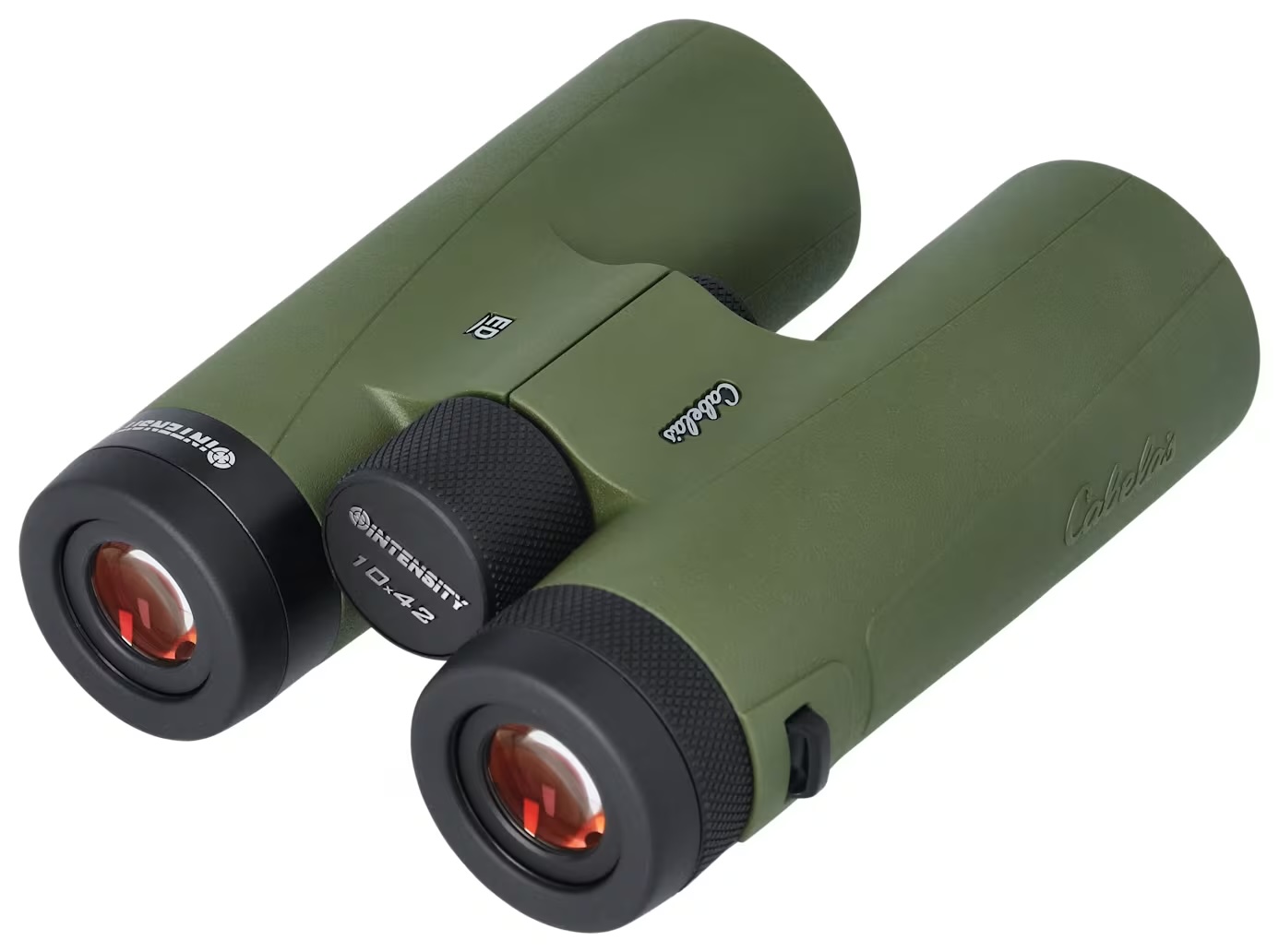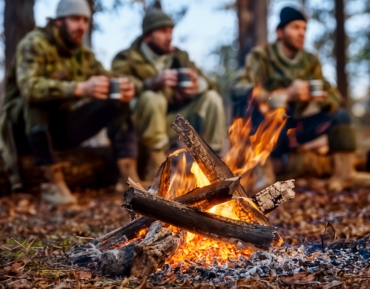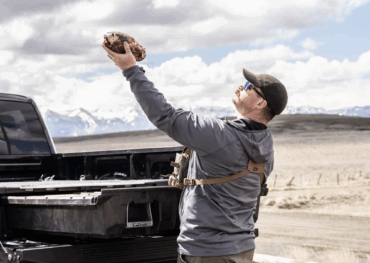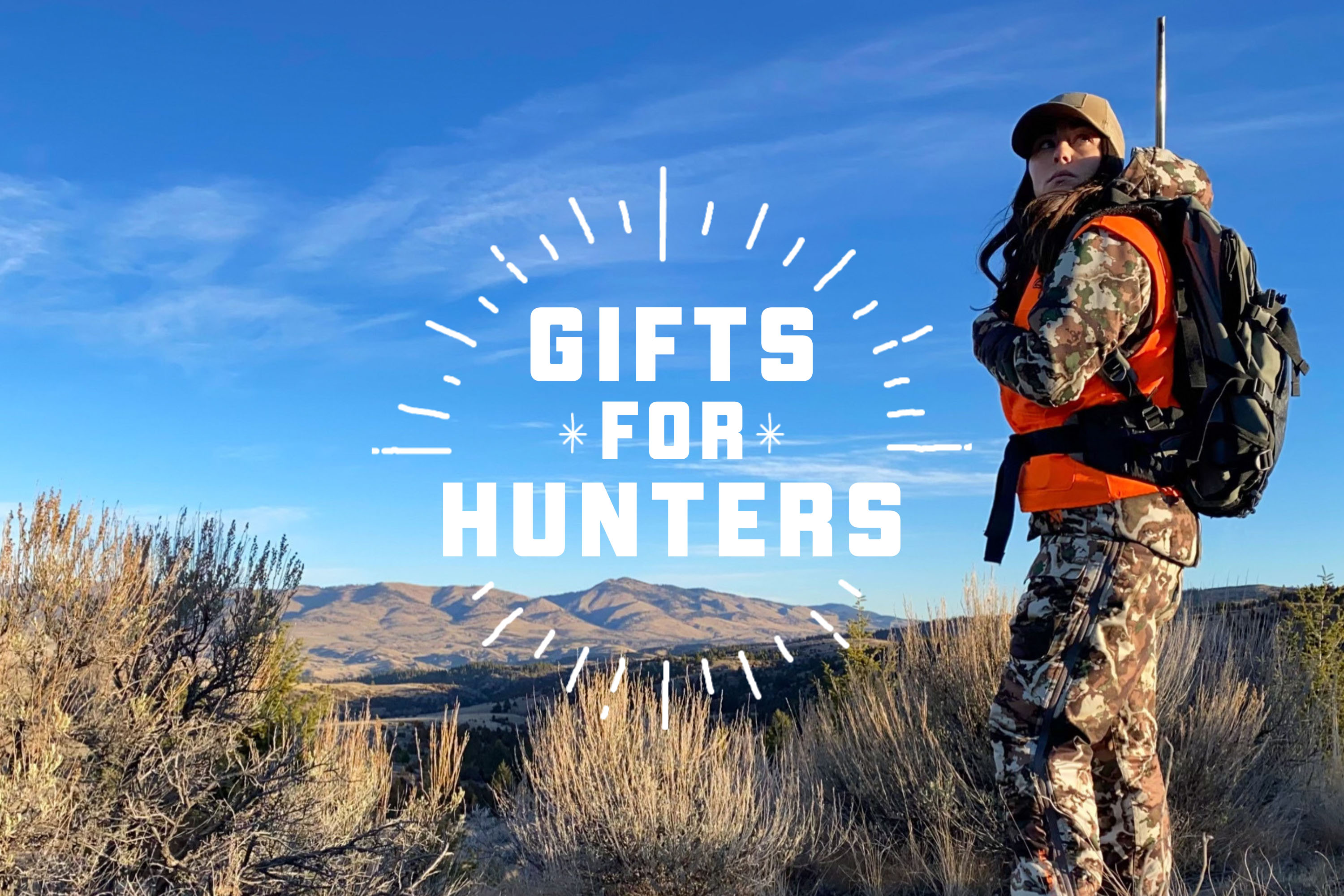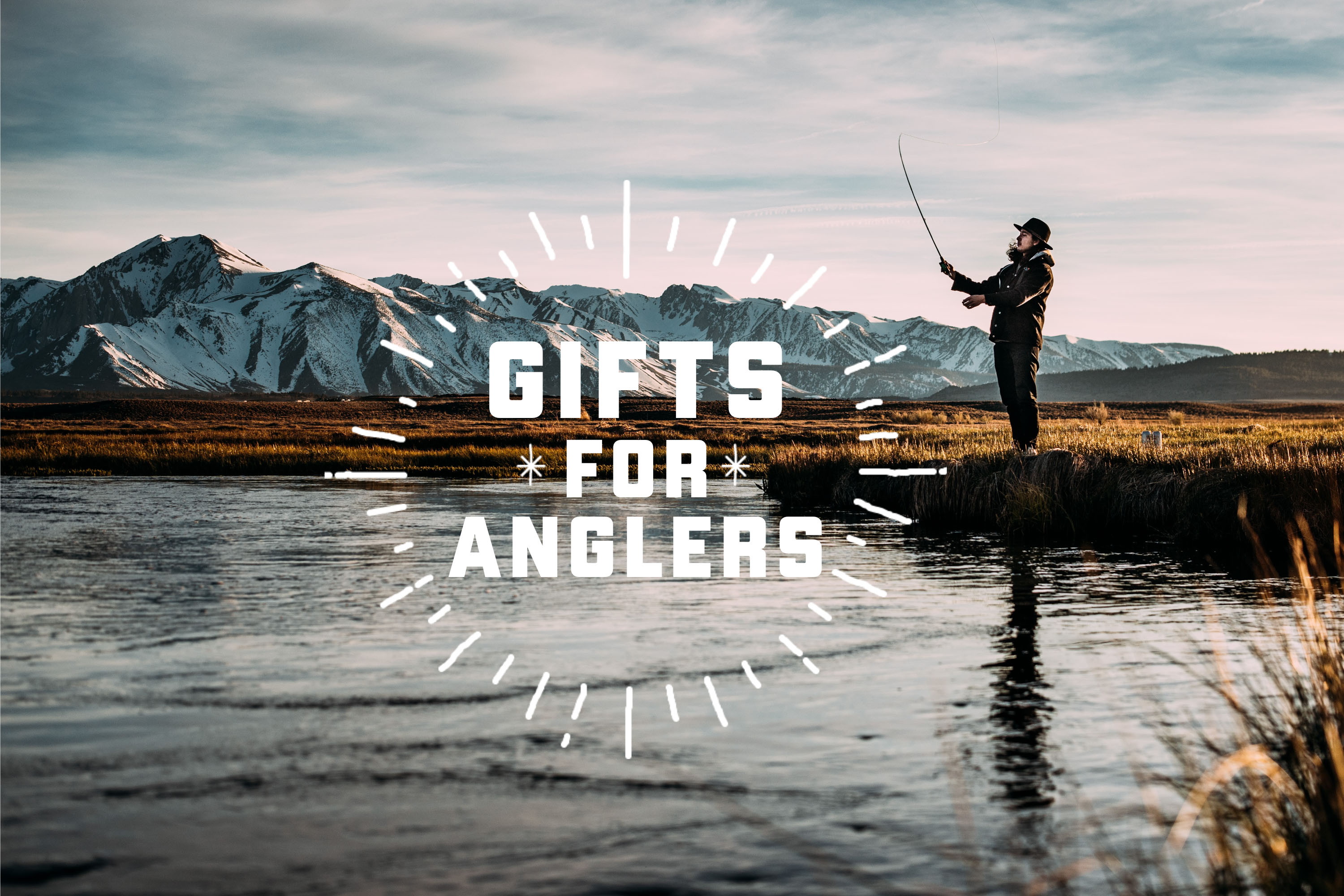Selecting the best pair of hunting binoculars can significantly improve your experience in the field. Binoculars provide you with the clarity and precision needed to spot wild game from a distance. Whether you’re glassing vast open fields or dense woodlands, the right binoculars can be crucial for a successful hunt.
Binoculars are expensive. But even so, any binocular is better than no binocular. With binos, price really does seem to reflect quality and performance, but you can have just as much success in the field with a $60 pair as you can with a $3,000 pair. If you aren’t a diehard hunter and are looking for a cost-effective set for recreational use, check out our general best binoculars buyer’s guide.
Sure, you might lose a few minutes of light at the end of the hunt with a cheaper pair, and you might need to bring some Tylenol for the eye strain, but any pair will do the trick. Don’t let your old hand-me-downs keep you out of the woods.
So if you’re in the market for new glass for this upcoming season, let us help you wade through the countless options out there. A good pair of binoculars should last you a lifetime, so let’s make this a “buy once, cry once” scenario. Investing in quality glass is certainly worth it. Think of the difference between the picture of a really cheap TV and a high-dollar, ultra-high-def one. You likely won’t regret the splurge.
Editor’s Note: We updated this guide on August 22, 2025, by adding new products, including the best budget hunting binoculars, the Bushnell R5 10X42. We also included resources on binocular warranties.
The Best Hunting Binoculars of 2025
Maven C.3 10X50
-
Value
9.5
-
Size
7.7
-
Clarity
8.8
-
Low light performance
9.0
- Magnification: 10x
- Objective: 50mm
- Eye Relief: 19.5mm
- Linear FOV: 262'
- FOV: 5 Degrees
- Weight: 1 lb., 12 oz.
- Prism Style: Roof
Pros
- Incredible performance for the price
- Great in-hand feel
- Excellent low-light performance
- Lightweight
Cons
- Narrow field of view
Bushnell R5 10X42
-
Value
8.9
-
Size
7.5
-
Clarity
7.3
-
Low light performance
7.0
- Magnification: 10X
- Objective: 42mm
- Eye Relief: 15.1mm
- Linear FOV: 330'
- FOV: Not specified
- Weight: 1 lb., 7.8 oz.
- Prism style: Roof
Pros
- Extremely lightweight
- Surprisingly crisp, bright optics for the price
- Smooth, easy focus wheel even with gloves
- Feels solid without feeling bulky
Cons
- Bino harness is basic
- Low-light performance can't compete with pricier glass
Vortex Razor UHD 8×32
-
Value
7.4
-
Size
9.8
-
Clarity
9.0
-
Low light performance
8.0
- Magnification: 8x
- Objective: 32mm
- Eye Relief: 19.0mm
- Linear FOV: 472'
- FOV: 9 Degrees
- Weight: 1 lb., 5.9 oz.
- Prism Style: Roof
Pros
- Super compact
- Lightweight
- Great clarity
- Great in low light conditions
Cons
- Expensive
Leupold BX-4 Range HD
-
Value
8.3
-
Size
6.9
-
Clarity
9.1
-
Low light performance
8.5
- Magnification: 10x
- Objective: 42mm
- Eye Relief: 17mm
- Linear FOV: 334'
- FOV: 6.2 Degrees
- Weight: 2 lbs., 7 oz.
- Prism Style: Roof
Pros
- Fast ranging
- Incredible clarity
- Combines gear to save on packing
Cons
- Weight
- Size/Bulk
SIG ZULU6 HDX 20×42
-
Value
6.9
-
Size
6.8
-
Clarity
9.5
-
Low-light performance
7.4
- Magnification: 20x
- Objective: 42mm
- Eye Relief: 15mm
- Linear FOV: Unspecified
- FOV: 3.3 degrees
- Weight: 1 lb., 5.9 oz.
- Prism Style: Roof
Pros
- Image stabilizing
- Lightweight
- Serious magnification
- Extreme clarity
Cons
- Loss of performance in low light conditions
Vortex Razor UHD 12×50
-
Value
7.4
-
Size
7.0
-
Clarity
9.0
-
Low light performance
9.5
- Magnification: 12x
- Objective: 50mm
- Eye Relief: 17mm
- Linear FOV: 288'
- FOV: 5.5 degrees
- Weight: 2 lbs., 4.5 oz.
- Prism Style: Roof
Pros
- Great clarity
- Serious reach
- Perfect for digiscoping with a tripod/support
Cons
- Large
- Heavy
- Expensive
Swarovski EL Range 10×42
-
Value
7.0
-
Size
8.5
-
Clarity
9.8
-
Low light performance
9.2
- Magnification: 10X
- Objective: 42mm
- Eye relief: 19mm
- Linear FOV: 359'
- FOV: 6.8 degrees
- Weight: 2 lbs., 0.6 oz.
- Prism style: Roof
Pros
- Unmatched clarity
- Wide field of view
- Fast ranging without additional gear
- High-quality case and strap included
Cons
- Expensive
- Unique base shape
Other Hunting Binoculars, Tested
- Magnification: 12x
- Objective: 50mm
- Eye Relief: 19.5mm
- Linear FOV: Unspecified
- FOV: Unspecified
- Weight: 1 lb., 14.8 oz.
- Prism Style: Roof
Pros
- Very budget friendly
- Great clarity for price
- Case, strap included
Cons
- Cheaper body feel
- Magnification: 10
- Objective: 42mm
- Eye relief: 15.1mm
- Linear FOV: 330'
- FOV: Not specified
- Weight: 1 lb., 10.2 oz.
- Prism style: BaK-4 Roof
Pros
- Price
- Aggressive texture on knobs
- Low-light performance
- Great clarity for the price
- Quiet binocular harness
Cons
- Warranty
- Slightly easier to fog
- Weight
Hunting Binoculars Comparison Chart
| Binoculars | Price | Objective | Magnification | Eye Relief | Linear FOV | FOV | Weight |
|---|---|---|---|---|---|---|---|
| Maven C.3 10X50 | $475 | 50mm | 10x | 19.5mm | 262′ | 5° | 1 lb., 12 oz. |
| Bushnell R5 10X42 | $249 | 42mm | 10x | 15.1mm | 330′ | Unspecified | 1 lb., 7.8 oz. |
| Vortex Razor UHD 8×32 | $2,150 | 32mm | 8x | 19mm | 472′ | 9° | 1 lb., 5.9 oz. |
| Leupold BX-4 Range HD | $1,599 | 42mm | 10x | 17mm | 334′ | 6.2° | 2 lbs., 7 oz. |
| SIG ZULU6 HDX 20×42 | $1,200 | 42mm | 20x | 15mm | Unspecified | 3.3° | 1 lb., 5.9 oz. |
| Vortex Razor UHD 12×50 | $2,600 | 50mm | 12x | 17mm | 288′ | 5.5° | 2 lbs., 4.5 oz. |
| Swarovski EL Range 10×42 | $3,999 | 42mm | 10X | 19mm | 359′ | 6.8° | 2 lbs., 0.6 oz. |
| Redfield Rebel | $160 | 50mm | 12x | 19.5mm | Unspecified | Unspecified | 1 lb., 14.8 oz. |
| Cabela’s Intensity ED 10X42 | $199 | 42mm | 10x | 15.1mm | 330′ | Unspecified | 1 lb., 10.2 oz. |

How We Tested Hunting Binoculars
The GearJunkie Hunting Binocular Testing Team
We stare through a lot of glass all year long. Fortunately, no matter what you hunt, where you hunt, or how you hunt, almost everyone has at least one pair of binoculars. It’s hard to get the job done without them.
For us, this means that everyone on our team, from staff writers to editors to freelancers, uses binos almost daily. Our bowhunters have their favorites, while our rifle hunters have theirs. The tree stand hunters think certain brands are best, while the spot-and-stalk hunters absolutely disagree.
Half the team thinks magnification is more important, and half the team thinks objective rules the roost.
When it comes down to it, we have a wide spread of hunters with opinions just as wide.
Our Editorial Director, Sean McCoy, hunts in very different conditions than our Hunt and Fish Editor, Rachelle Schrute. We have freelancers who only take shots at whitetail deer within 20 yards and freelancers who play the long-range rifle game. With so many vastly different experiences, environments, and conditions, the GearJunkie crew has strong opinions on what constitutes the best optics.
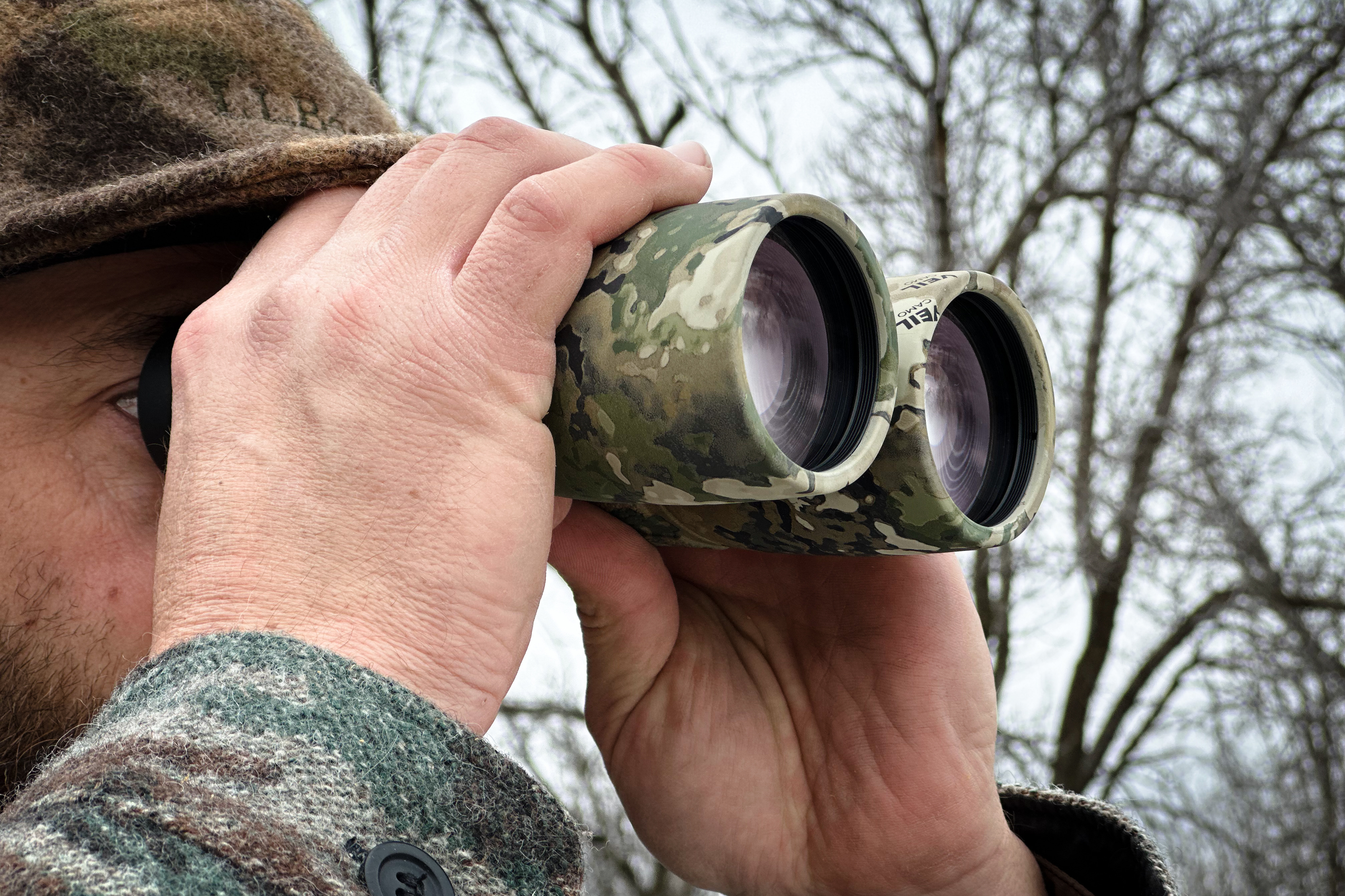
‘Blind’ Testing
One thing we try to do with tests like these is to come at them as “uninformed” about the product as possible. That might sound counterintuitive, but we don’t want to know if one pair costs thousands while another pair is a budget buy. Binoculars are the perfect product to “blind test,” if that makes any sense.
We hunt and scout with the binos all year, but for our dedicated comparison tests, we would take a canvas tote filled with different pairs of binoculars to different locations at different times of day and just grab a pair and look (I can already feel the prospective companies cringing at the brutality of how these products are “mishandled” during our tests).
With a pile of different pairs of binoculars in a bunch of different scenarios, we really did get the feel of which binos performed best, price tag not considered. Though, we’re well aware that when we pick up a set of Bushnell’s they won’t hit the cash register as hard as a pair of Swarovskis.
In the end, what we seem to find is that we lean toward the more expensive products for obvious reasons. When you have more tech, higher quality materials, and more assets going into a product, it obviously results in better-performing end products and higher prices. That’s just the way the cookie crumbles.
However, we’ve been surprised at how well some of the budget products have performed. Some, like the Redfield binos, blew us away. There are budget options that really do sit comfortably with the big guys, regardless of price.
Brutal Condition Testing
Any pair of binoculars will perform just fine at room temperature, in a dry setting, on a sunny day. Hunting rarely takes place under those conditions. (Insert another trigger warning for the brands and PR companies here.)
If the binoculars claim to be waterproof, we submerge them and leave them submerged overnight. If they’re touted as fog-proof, we keep ’em in a hot cab, immediately jump out to sub-zero temperatures, and give them the old *huhhhhh-huhhhh* breath to see if they’ll fog up. They get tossed into a bag; lens covers be damned. If they’re scratch-resistant, we’ll definitely find out. We are not kind to optics, and after a lifetime of babying any binoculars, that’s a tough thing to do.
From early season 100-degree plus hunts where dirt and dust settle into every nook, to -20-degree hunts where we have trouble even adjusting the dial, we’ve put these binos through every condition imaginable and some conditions that are beyond reasonable use.
Our goal is to break, bend, stretch, scratch, and find every weak spot and flaw… so you don’t have to.
We have even more binos in our recreationally focused Binoculars guide, and if you’re going to be out squinting all day, be sure to carry some sunglasses to keep your eyes fresh and functioning.
Hunting Binocular Buyer’s Guide
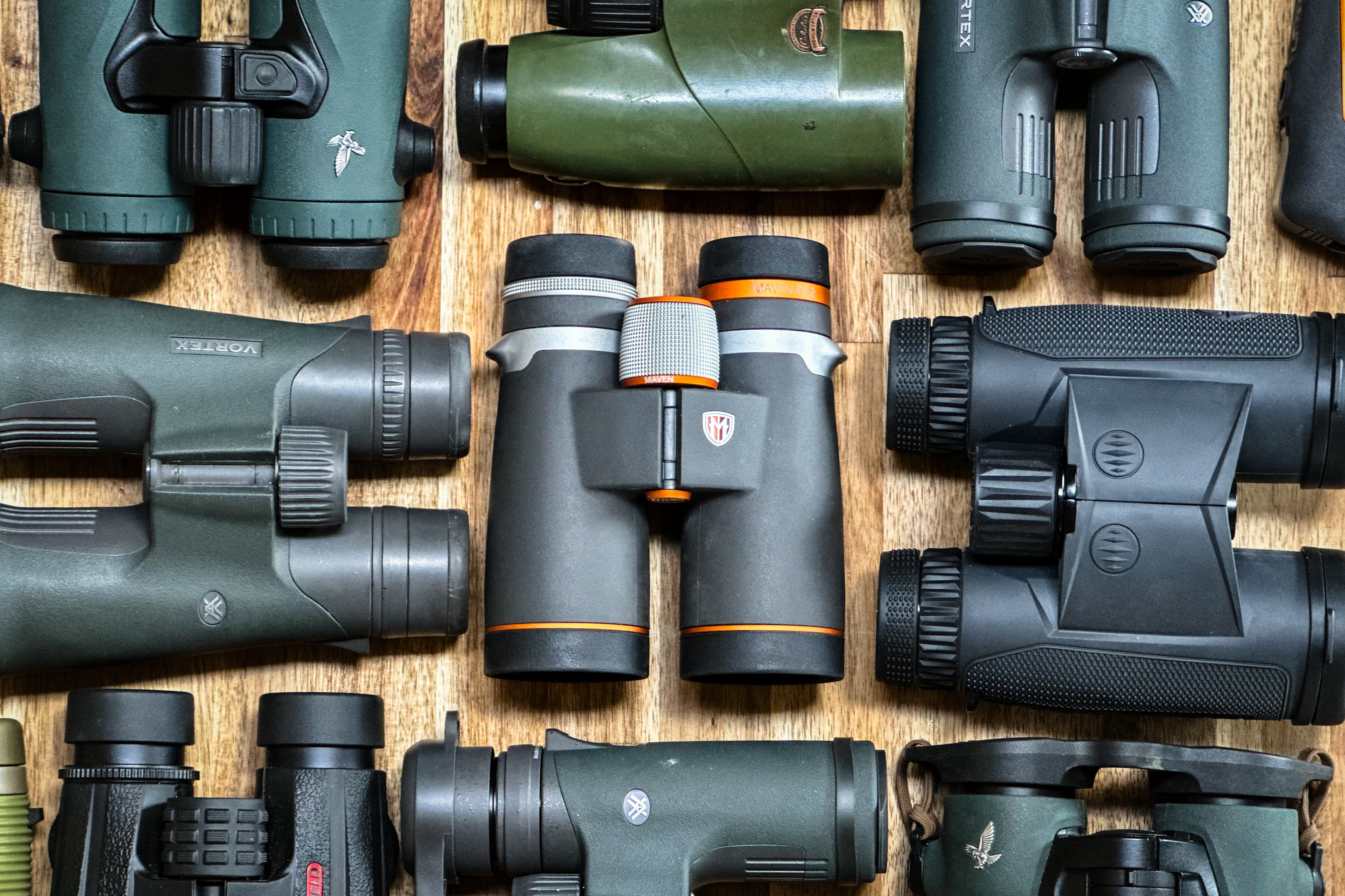
Magnification and Objective Lens Size
Magnification (8x, 10x, 12x, etc.): Higher magnification provides a closer view of distant objects. For hunting, 8x and 10x are the most common choices. 8x magnification is ideal for dense forests and closer ranges, offering a wider field of view. 10x is better for open fields, mountain terrain, and long-distance scouting.
When you reach the 12x range of optics, you’re in it for longer reach, sacrificing low-light capability for that additional magnification stretch to see wild game at wild distances. The Vortex Razor UHD 12×50 are our favorite long-range binos, and the Redfield Rebel 12×50 has decent magnification at a wallet-friendly price.
Objective Lens Size (32mm, 42mm, 50mm, etc.): Larger lenses gather more light, resulting in brighter images, especially in low-light conditions. That means a 50mm lens will gather far more light and perform better early in the morning and later in the evening than a 32mm lens. The downfall of a larger lens is added weight. A 42mm objective lens is a good balance between light-gathering capability and portability if you’re looking for a safe bet that will be universal.
Lens Coating
Almost every brand has its own proprietary lens coating. Lenses that are fully multi-coated offer the best light transmission, enhancing clarity and brightness. Coatings also help reduce glare and improve durability, as well as offer scratch, smudge, and fog protection. Something as simple as a coating can make a huge difference to the performance of your binos in the field.
Prism Type
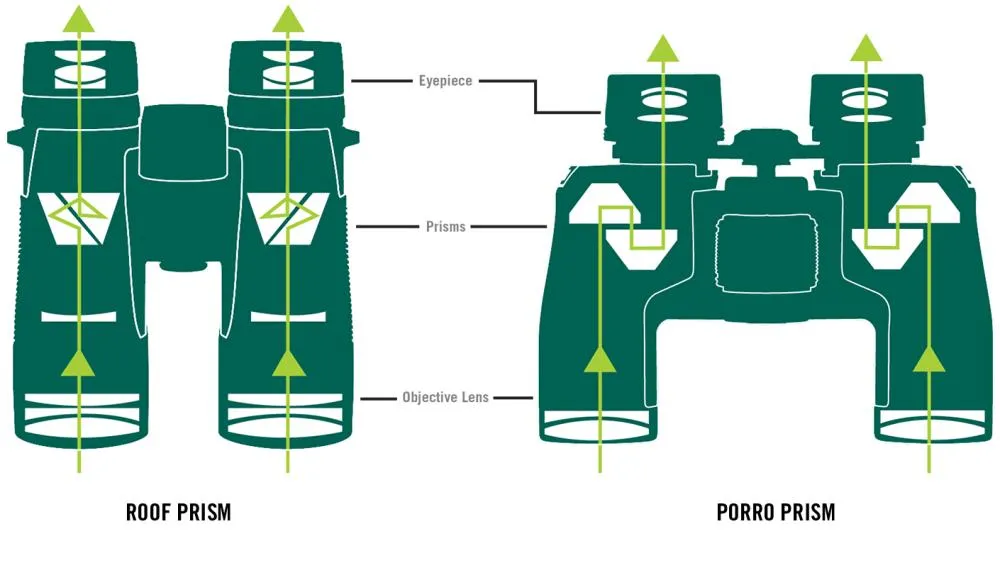
There are two main types of prisms used in binoculars today. You may notice that every set of binoculars on the list has a roof prism. This is for good reason. Roof prisms are more compact and durable. The construction allows them to be in line, making them easier to handle and carry. Roof prism binoculars are the most commonly seen binos today and are the obvious choice for hunters.
Porro prism binoculars are easily identifiable by the wide, offset build. If you grew up using a hand-me-down pair of binos, they were very likely Porro prism.
Hunting Binocular Weight and Size
The weight of the binos you choose really is important, particularly if you’re a backcountry hunter or bowhunter. Because hunters tend to carry their binoculars in a chest pack or bino harness, the added weight and size can be noticeable and, depending on the hunter’s size, can hinder performance. Smaller framed hunters may find that large binoculars or a large bino harness on the chest may impede their ability to use their bow. The Vortex Razor UHD 8×32 are our favorite compact binoculars.
Weight is also a major consideration when we look at scouting fatigue. It may seem silly, but heavy binoculars are not fun to hold up. You will absolutely feel arm fatigue after glassing for long period of time looking for wild game.
Also, hunters don’t want to carry any more weight than they have to. Every additional ounce that you carry in is another ounce you have to carry out when your pack is hopefully loaded down with successfully hunted meat.
Additional Features
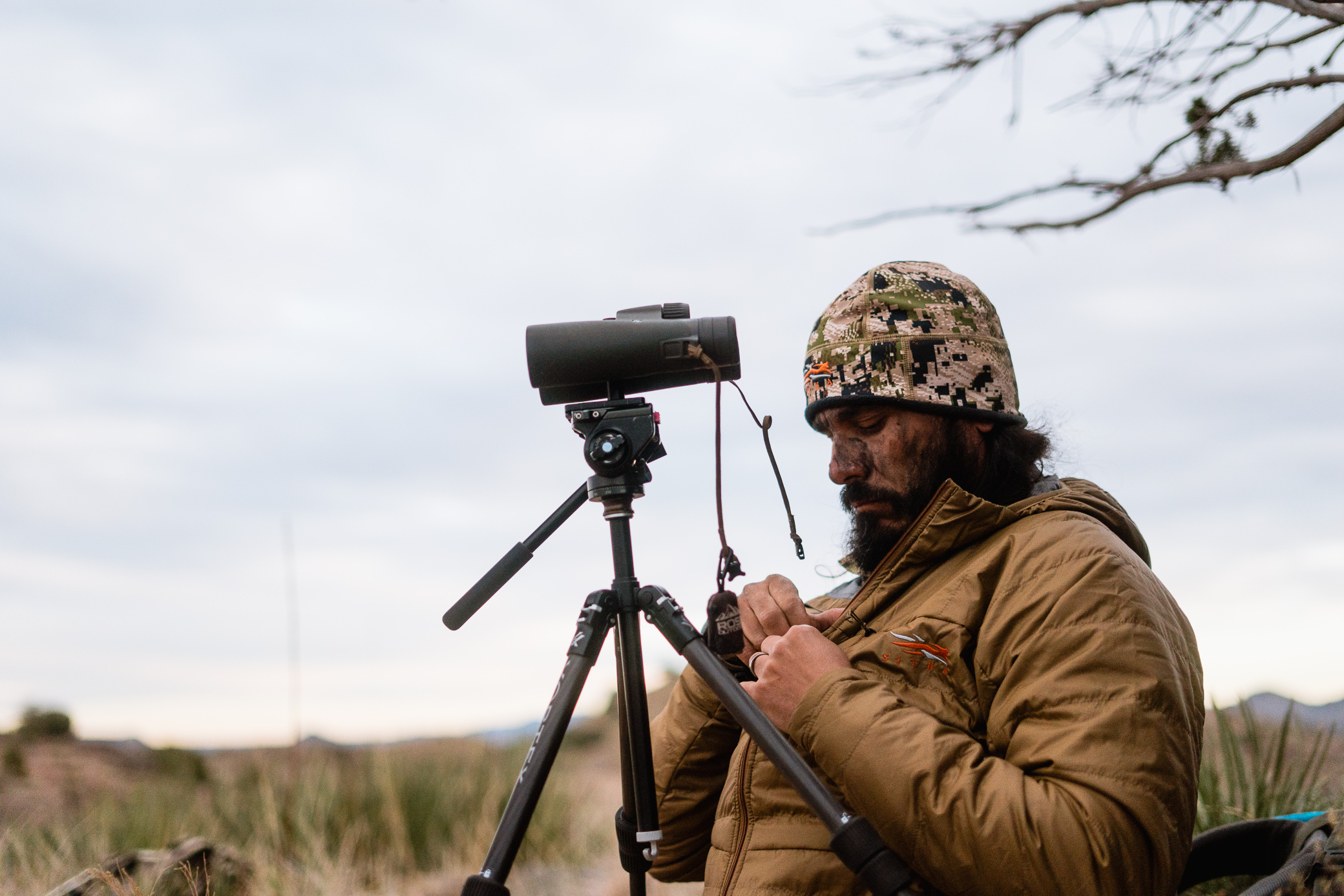
Adjustable Diopter
If you have differences in vision between your eyes, you may want to be sure to look for binoculars with an adjustable diopter. This allows for individual focusing adjustments to suit differences in your eyes. If you’re the type who wears glasses and likes to take them off to glass, this becomes almost mandatory.
Tripod Adaptability
For scouting pre-season or for hunts where you know you’ll be sitting and glassing for long periods of time, you may want to seriously consider opting for hunting binoculars that have tripod attachment points. Fortunately, most modern hunting binoculars are fitted with that ability. You’ll often find that attachment location hidden behind the round logo emblem on the middle front portion of the binocular body. If you plan to use a tripod, be sure to pick up a binocular tripod mount.
Hunting Binocular Warranty

Check, double-check, and then triple-check that warranty coverage. Some manufacturers only cover “defects,” while others have major limitations on what is covered. Some, like Vortex, have iron-clad warranties that cover practically everything.
If you are spending major money on optics, or you’re teetering between brands, go with the one that has the best warranty. Glass breaks. Accidents happen. When you involve hunting, sharp objects, wet hands, and brutal conditions, it’s only a matter of time before you’ll be calling the manufacturer for a little spiffy or full-blown replacement.
If you want to see details of the warranty offered by different brands, check out The Ultimate Binocular Warranty Comparison: Who’s Is Best?
Frequently Asked Questions
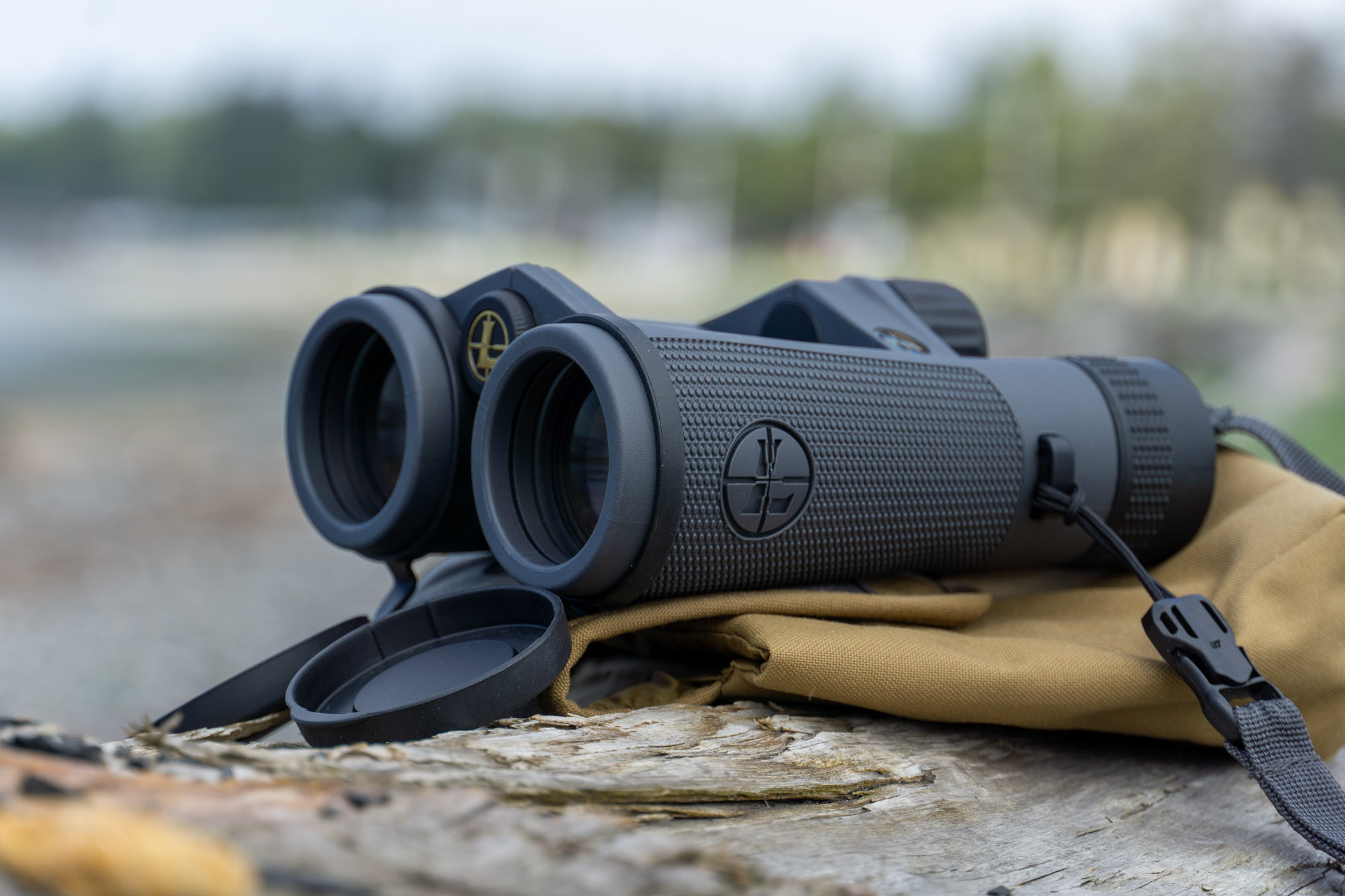
The first number indicates magnification power. If your binoculars read “10×42”, the “10x” portion denotes the magnification. What this means is that the object you are viewing will appear ten times closer than it does to the naked eye. So, if you’re looking at a deer 1000 yards away, it will look as if it were only 100 yards away.
Common magnifications are 8x, 10x, and 12x.
The second number indicates the diameter of the objective lenses in millimeters. It’s the “42” in “10×42”. The objective lens is the lens located at the end of the binoculars farthest from your eyes. Its primary function is to gather light and focus it to create a clear image. The size of the objective lens is measured in millimeters (mm).
Common objective lens diameters are 32mm, 32mm, and 50mm. 32mm are more lightweight and portable, but don’t let in as much light and have reduced clarity. 50mm are larger and heavier but allow for maximum light and clarity.

8x and 10x magnification are easily the most popular for hunters. 8x is great for dense forests and closer ranges like tree stand hunting or bowhunting. 10x is better for open grasslands, deserts, prairies, and longer distances. When you start to get into really far targets and scouting for animals like mountain goats and sheep, you’ll likely find hunters sacrificing a bit of extra weight to bump up their magnification to 12x.
I find the sweet spot for mountain hunting is 10×42. For midwest tree stand hunts, you might just bring a rangefinder to use as binos, or bump down to 8x32s. For big-kid, high alpine goat and sheep hunts, go big with a 12×50 or more. You won’t regret it.
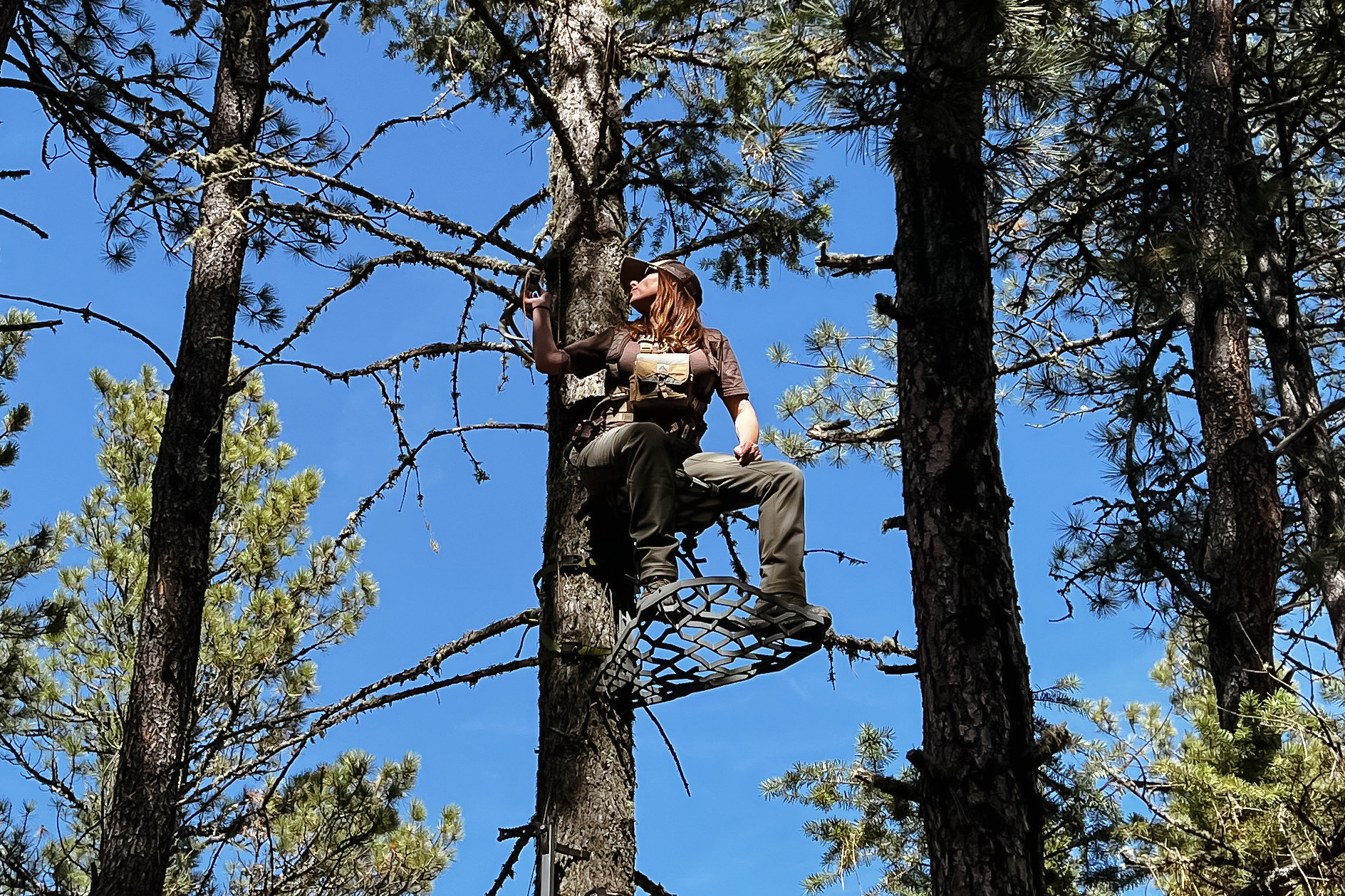
The Best Tree Stands of 2025-2026
We’ve spent the time hanging out in the trees to find the best tree stands for hunters. Our top choices include models from Novix, XOP, and Latitude.

The Best Bow Sights for Hunting in 2024
Finding the right bow sight for you can be an uphill battle. Not to worry — we’ve broken down our top picks of bow sights for 2024.
